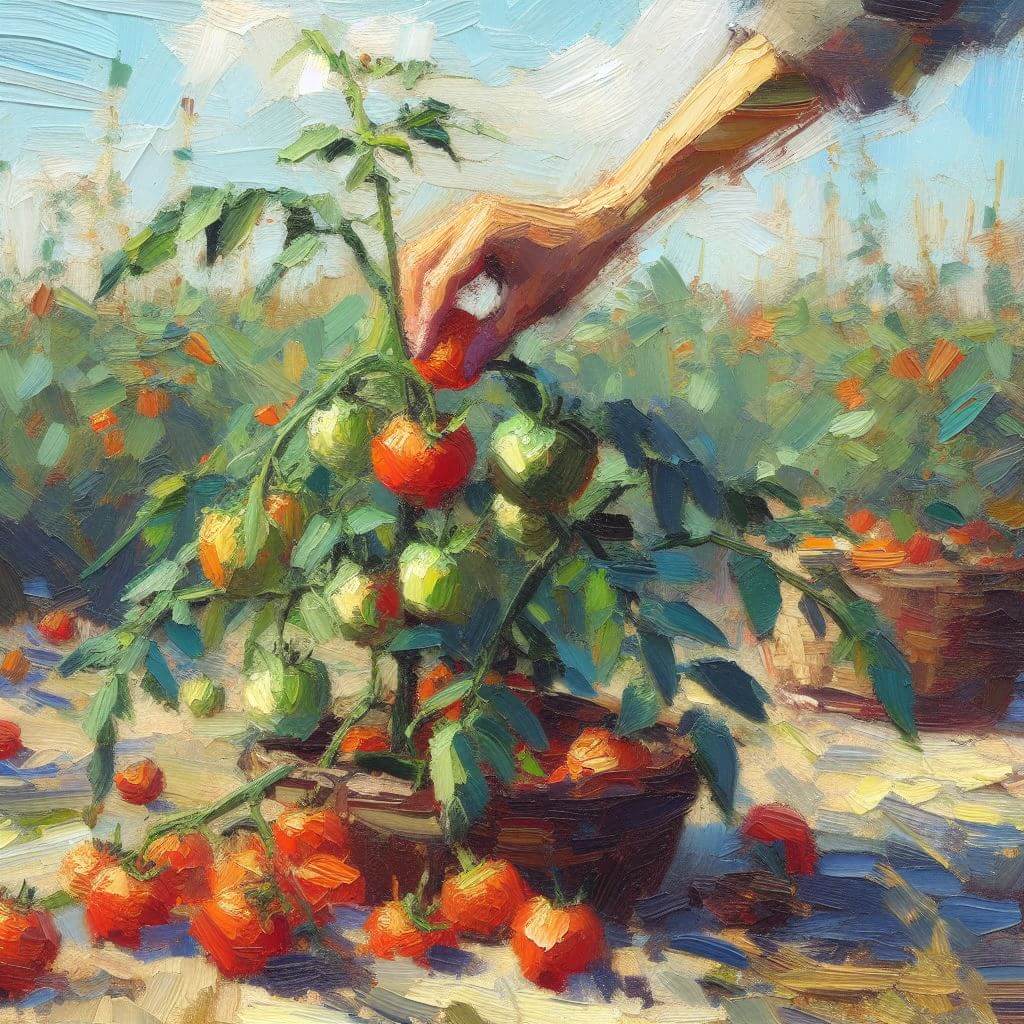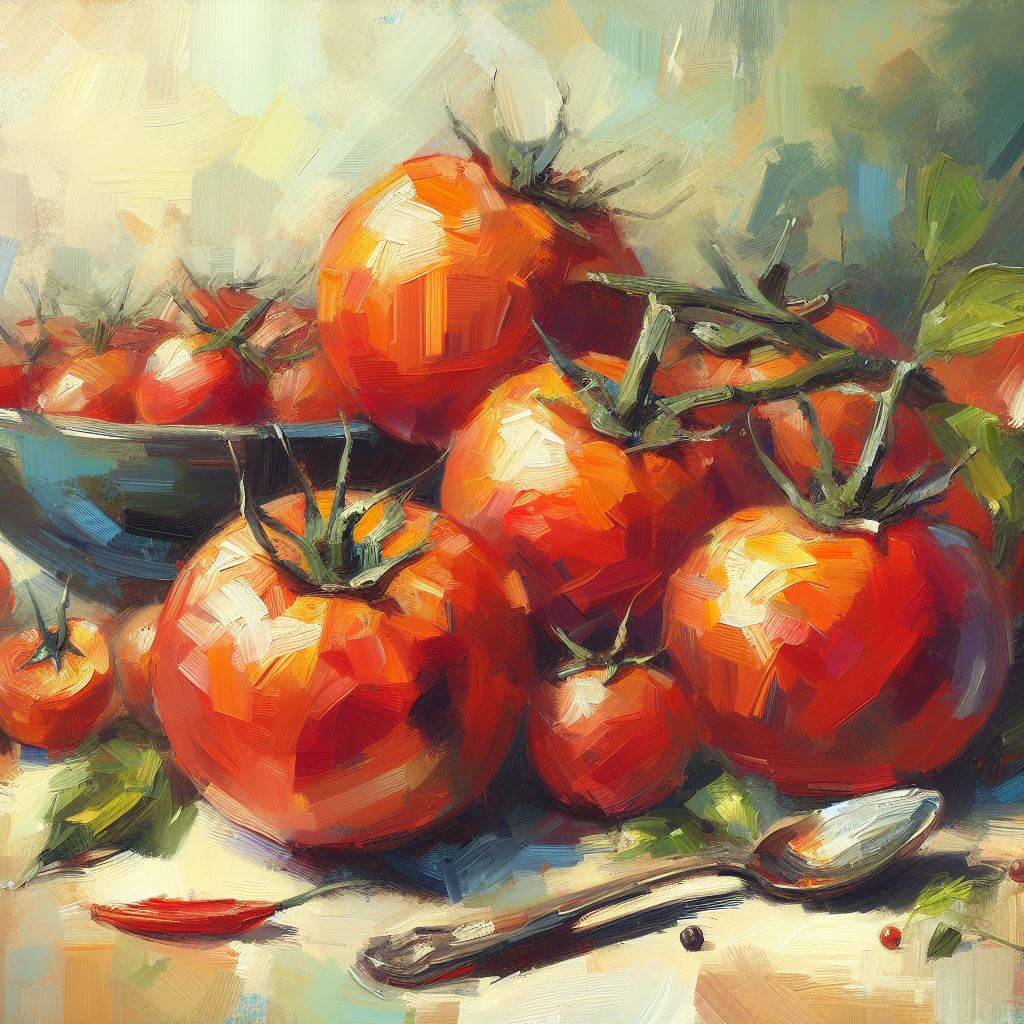
There is an unspoken joy that comes with growing your own tomatoes. The process, from planting to harvesting, promises a rewarding experience. It brings us closer to nature while providing a source of fresh and organic produce. In New Jersey, the Garden State, this joy is magnified. The state’s unique climate conditions make it a wonderful place to grow tomatoes.
The Allure of Tomatoes
Tomatoes, or Solanum lycopersicum, are a versatile crop. They’re used in a plethora of dishes, from salads to sauces, and offer a wealth of health benefits. Rich in antioxidants like lycopene, tomatoes contribute to heart health and cancer prevention. Growing tomatoes in your backyard isn’t only about fresh produce; it’s about cultivating good health.
New Jersey: The Ideal Tomato Haven
New Jersey is not randomly dubbed the Garden State. Its climate, soil, and moisture conditions make it an ideal place for growing a variety of crops, especially tomatoes. The state experiences a humid continental climate with cold winters and warm, humid summers – conditions that tomatoes thrive in. Its soil is generally fertile, with good drainage, which is key for healthy tomato plants.
When to Plant Tomatoes in New Jersey
Timing is everything when it comes to planting tomatoes. In New Jersey, the best time to plant tomatoes is in late spring, specifically in May. This is when the soil temperature has warmed sufficiently, and the danger of frost has passed.
Planting tomatoes in May allows the plants enough time to mature and produce fruit before the first frost in fall. It’s important to note that the growth and productivity of tomato plants can vary depending on when they are planted. Tomatoes planted too early or too late may not yield as much fruit as those planted at the ideal time.
When to Plant Tomatoes in New Jersey: Region-Specific Recommendations
Northern New Jersey
This region includes cities like Newark and Paterson, characterized by a humid continental climate with cold winters and hot, humid summers. The best time to plant tomatoes is late May to early June, once the soil warms and the risk of frost has passed.
Central New Jersey
This area includes cities like Trenton and New Brunswick and has a humid mesothermal climate. Warm and humid conditions prevail during the summer. Here, mid-May to late May is typically the best time to plant tomatoes, as frost is less likely.
Southern New Jersey
This includes cities like Camden and Atlantic City. The climate is more humid subtropical with milder winters and hot, humid summers. The safe window to plant tomatoes usually begins around early to mid-May, after the danger of frost has passed.
Eastern New Jersey
This region, including cities like Jersey City and Hoboken, is affected by the Atlantic Ocean, moderating temperatures and increasing humidity. The best time to plant tomatoes is mid to late May for the spring crop.
Western New Jersey
This region includes cities like Princeton and Phillipsburg, and has a climate that sits between the cooler Northern and warmer Southern regions. Here, tomatoes can typically be planted in mid to late May, post the last frost.

Planting Tomatoes 101: A Step-By-Step Guide
Planting tomatoes requires careful preparation and attention. To start, choose a sunny spot in your garden. Tomatoes need at least six hours of sunlight each day to grow properly. Then, prepare the soil by adding compost or other organic matter to improve its fertility and drainage.
Next, dig a hole that’s deep enough to cover two-thirds of the tomato plant, including the stem. Place the plant in the hole, then fill it with soil. Once planted, water the tomatoes thoroughly.
Remember, the secret to a bountiful tomato harvest in New Jersey lies not just in the timing of planting, but also in the care and maintenance of the plants. Regular watering, proper fertilization, and diligent pest control are just as important in ensuring a successful harvest.
Remember, patience is a virtue in gardening. With time, you’ll see your tomato plants thrive, ready to provide you with a fresh, healthy harvest.
Tomato Varieties: A Wealth of Choices
The variety of tomato you choose to plant can significantly impact your growing success. There are countless types of tomatoes, each with their unique characteristics, flavors, and growth habits. Some popular varieties for New Jersey gardens include Beefsteak, Cherry, and Roma tomatoes.
Beefsteak tomatoes are large, juicy, and perfect for slicing. If you’re a fan of tomato sandwiches, this variety would be an excellent choice. Cherry tomatoes, on the other hand, are small and sweet. They mature quickly and are great for salads or simply snacking straight off the vine. Roma tomatoes, also known as Italian or plum tomatoes, are thick-walled and less juicy, making them ideal for sauces and pastes.
Remember, the choice of tomato variety should align with your personal preferences and intended use.
Understanding New Jersey’s Climate
As mentioned earlier, New Jersey’s climate is a significant factor to consider when planting tomatoes. The state experiences a humid continental climate, characterized by cold winters and warm, humid summers. Understanding this climate pattern will help you plan your planting schedule effectively.
The last frost date in New Jersey usually falls between April 1st and May 1st. Planting tomatoes should be done after this date, once the soil has had a chance to warm up. On the other hand, the first frost date typically falls between October 1st and November 1st. This signals the end of the growing season for tomatoes.

Tomato Plant Care: Tips for Success
Once your tomatoes are in the ground, the real work begins. Here are some tips for successful tomato care:
Watering: Tomatoes need consistent watering. The soil should be kept moist but not waterlogged. A good rule of thumb is to water deeply but infrequently.
Fertilizing: Tomatoes are heavy feeders. Regular applications of a balanced, slow-release fertilizer can promote healthy growth and high yields.
Staking: Many tomato varieties need support as they grow. Stakes or cages can keep the plants upright, reducing the risk of disease and making it easier to harvest the tomatoes.
Pest and Disease Control: Regularly check your plants for signs of pests or disease. Early detection and intervention can save your tomato crop.
Remember, each tomato plant is an individual, and what works for one might not work for another. Pay close attention to your plants, and don’t be afraid to adjust your care routine as needed.
As you gain experience, you’ll become more adept at reading the signs your plants give you and adjusting your care techniques accordingly.
The Art of Harvesting Tomatoes
Once your tomato plants have flowered and fruited, the anticipation of harvesting begins. Harvesting tomatoes is an art in itself. It’s a moment of satisfaction, marking the culmination of your gardening efforts. In New Jersey, based on a May planting, you can expect to start harvesting tomatoes around July or August.
Tomatoes are best harvested when they have fully developed their color, but are still firm to the touch. Gently twist and pull the fruit off the vine, or use a pair of pruning shears for a clean cut. It’s essential to handle harvested tomatoes with care to avoid bruising or damaging them.
After harvesting, store tomatoes at room temperature until you’re ready to use them. Refrigerating tomatoes can alter their texture and flavor, so it’s best to avoid it unless the tomatoes are overly ripe.

Savoring the Fruits of Your Labor
The true reward of growing your own tomatoes comes when you finally get to taste the fruits of your labor. Whether you’re making a fresh salad, a hearty sauce, or simply enjoying a juicy tomato slice with a sprinkle of salt, homegrown tomatoes offer a flavor that’s incomparable to store-bought varieties.
Growing tomatoes in your backyard also opens up opportunities for preserving. You can make and can your own tomato sauces, salsas, or pastes. This way, you can savor the taste of your New Jersey-grown tomatoes long after the growing season has ended.
The Cycle of Growing Tomatoes
Once the growing season is over, and the last tomato has been harvested, it doesn’t mean the end of your tomato-growing journey. In fact, it’s just the beginning. Gardening is an ongoing process of learning and discovery. Each season brings new challenges and rewards.
As you clean up your garden at the end of the season, consider what worked and what didn’t. Maybe a particular tomato variety did exceptionally well, or perhaps you faced challenges with pests or diseases. Use these observations to plan for the next growing season.
With each season, you’ll gain more knowledge and experience, becoming a better gardener along the way.
Remember, the journey of gardening is never-ending. There’s always something new to learn, a new variety to try, and a new season to look forward to. Here’s to a successful tomato harvest!



